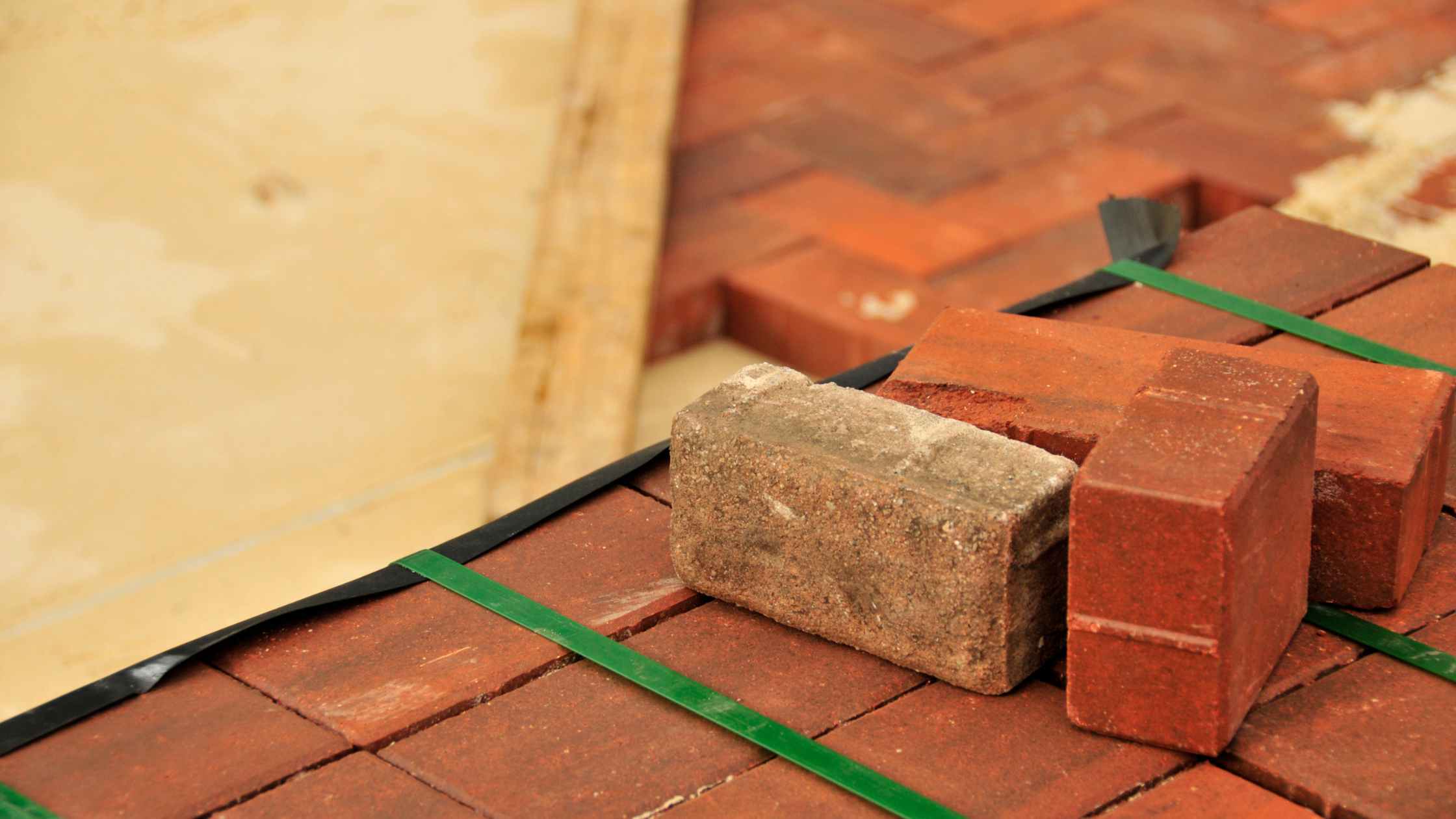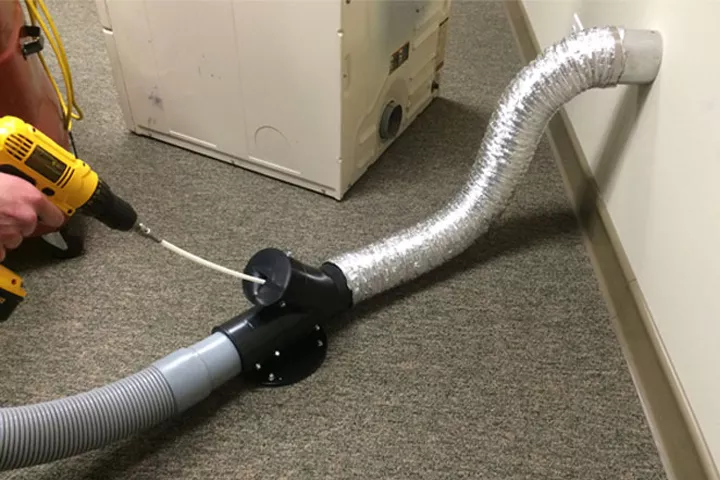Chimneys have long been a staple of residential and commercial architecture, especially in regions where heating systems rely on wood, coal, or oil combustion. While their practical purpose is clear: to safely vent smoke and gases from fireplaces and stoves, many homeowners and property managers may not fully understand the importance of routine chimney maintenance. One essential but often overlooked aspect of this maintenance is chimney pointing in Boston.
Today, we will be discussing chimney pointing, how it works, why it’s necessary, and what can go wrong if it’s neglected. We’ll also look at signs of damage, the process of repointing, and tips for hiring a professional air duct cleaner.
What is Chimney Pointing?
Chimney pointing is the process of repairing the mortar joints between the bricks or stones of a chimney. Over time, weather conditions, moisture, and thermal movement can cause the mortar to deteriorate, crack, or fall out. Pointing involves removing the damaged or crumbling mortar and replacing it with new mortar that matches the existing structure in composition and appearance.

This process is also referred to as “repointing” when it involves restoring existing mortar rather than applying it during original construction. Chimney pointing plays a critical role in maintaining the chimney’s structural integrity and protecting your home from water intrusion and other forms of damage.
Components of a Chimney Structure
To better appreciate the importance of pointing, it helps to understand the basic structure of a chimney. A masonry chimney includes:
- Chimney Cap: A protective covering that prevents rain, snow, animals, and debris from entering the chimney.
- Crown: A concrete or mortar surface at the top of the chimney that helps deflect water.
- Flue Liner: Protects the inner walls of the chimney and improves airflow.
- Smoke Chamber: Funnels smoke from the fireplace into the flue.
- Masonry: The bricks provide structural support, while mortar holds them in place and seals the joints.
- Flashing: Metal installed at the base of the chimney to prevent water leaks where it meets the roof.
Among these components, the mortar is most susceptible to weathering and erosion, making chimney pointing an essential part of the chimney’s maintenance.
Also Read: 10 Signs Your Furnace Chimney Needs Cleaning
Why Chimney Pointing is Important
Prevents Water Damage
Mortar joints are porous by nature. As they crack and degrade, they allow water to seep into the masonry. This moisture can lead to:
- Efflorescence
- Mold and mildew
- Freeze-thaw damage
- Chimney leaks
- Internal water damage to ceilings and walls
By repointing deteriorating mortar, homeowners can prevent costly water-related damage and maintain a dry, secure home.
Increase Structural Stability
Mortar plays a vital role in holding the chimney bricks together. When mortar erodes, bricks become loose, increasing the risk of collapse or partial chimney failure. This is particularly hazardous in older homes, where chimneys may already be structurally compromised.
Timely pointing can restore stability and extend the lifespan of your chimney by several decades.
Improves Energy Efficiency
Cracks in mortar joints allow cold air to enter and warm air to escape. This compromises the thermal efficiency of the home, especially in winter months. Repointing seals these gaps and helps maintain stable indoor temperatures, reducing heating costs.
Preserves Aesthetic Appeal
A well-maintained chimney contributes to your home’s curb appeal. Discolored, crumbling mortar and loose bricks make the structure look neglected. Professional pointing restores a neat and uniform appearance, enhancing the overall value of your property.
Protects Against Pests
Gaps in the mortar can become entry points for insects, birds, rodents, and other pests. Nesting within the chimney flue or brickwork can cause obstructions, odors, and even fires. Repointing eliminates these vulnerabilities.
Signs Your Chimney Needs Repointing
It’s not always obvious when a chimney needs attention, but some clear indicators suggest it’s time to call a professional:
- Visible Cracks in Mortar Joints: Gaps, splits, or missing mortar between bricks.
- Loose or Displaced Bricks: Mortar failure can cause bricks to shift or fall out.
- Water Stains Inside the House: Moisture leaking through the chimney may appear as ceiling or wall stains.
- Damp Fireplace: An unusually moist firebox or flue area can indicate water penetration.
- Flaking or Spalling Bricks: When the surface of bricks flakes off, it often stems from moisture getting in through cracked mortar.
- Efflorescence: White residue on the surface of bricks indicates that moisture is moving through the chimney.
Chimney Repointing Process
A professional chimney repointing job involves several steps. Here’s what to expect:
Inspection and Assessment
The first step involves a thorough inspection to assess the condition of the mortar, bricks, and overall chimney structure. A mason may use ladders, drones, or scaffolding, and some may conduct a video scan of the flue interior.
Mortar Removal
Using a chisel or specialized tool like an angle grinder with a mortar raking blade, the damaged mortar is removed to a depth of at least ½ to ¾ inch. Care is taken to avoid damaging the bricks during this process.
Surface Cleaning
Before applying new mortar, the brick joints are cleaned of dust and debris. Sometimes water is used to dampen the joints to improve adhesion.
Mortar Matching and Mixing
The replacement mortar should match the original mortar in color, composition, and strength. For historic buildings, lime-based mortar may be used instead of Portland cement.
Application of New Mortar
Fresh mortar is applied using pointing tools, carefully packed into the joints. The mason shapes the mortar to match the existing style—flush, concave, V-joint, or weathered.
Finishing and Curing
Once the mortar sets slightly, joints are tooled for consistency and aesthetics. The area is cleaned, and the mortar is allowed to cure over several days. Water may be sprayed lightly to prevent rapid drying and cracking.
Also Read: Do You Need a Chimney Inspection After Buying a Home?
DIY vs. Professional Repointing: What is the Best?

Can You Repoint a Chimney Yourself?
DIY chimney pointing is possible, but it’s not recommended unless you have masonry experience. Working at height and handling masonry tools can be dangerous. Moreover, improper mortar selection or technique can cause further damage and lead to expensive repairs down the road.
Benefits of Hiring a Professional
- Expertise in Mortar Composition
- Access to Proper Equipment
- Understanding of Local Building Codes
- Efficient and Safe Execution
- Guarantee of Quality Work
Long-Term Benefits of Regular Maintenance
Increased Chimney Lifespan
Properly maintained mortar joints can last 25–30 years or longer. Neglected joints, on the other hand, can lead to brick replacement or complete rebuilds within a decade.
Fire Safety
Loose or crumbling bricks can create flue obstructions or allow embers to escape, creating fire hazards. Repointing minimizes this risk by maintaining the chimney’s structural and thermal integrity.
Higher Property Value
A structurally sound and aesthetically pleasing chimney adds to a home’s resale value and inspection score. Homebuyers often flag chimney issues during pre-purchase inspections.
Peace of Mind
Perhaps the most overlooked benefit is peace of mind. Knowing your chimney is in excellent condition—weather-tight, secure, and safe—lets you enjoy your fireplace or stove without worry.
Prevents Pest Infestations
Small gaps and deteriorated mortar joints can become entry points for birds, insects, rodents, and other pests. Regular pointing keeps these openings sealed, helping to prevent infestations that could compromise the chimney and surrounding structure.
Reduced Energy Bills
Gaps in masonry not only allow cold air and moisture into your home but also let warm air escape. Repointing helps insulate your home better, which can lower your heating costs, especially during colder months.
Preserves Indoor Air Quality
When water gets into a compromised chimney, it can lead to mold growth, soot backflow, or even carbon monoxide leakage. By keeping the mortar joints sealed and the structure intact, you maintain healthier indoor air quality.
Avoids Emergency Repairs
Proactive maintenance, like repointing, helps avoid sudden, expensive emergencies such as a chimney collapse or interior leaks during heavy rains. Scheduled upkeep is always more cost-effective than reactive repairs.
Maintains Historical and Architectural Integrity
For older homes or heritage properties, consistent chimney care, including pointing with historically accurate mortar, ensures that the original craftsmanship and architectural character are preserved for future generations.
Supports Optimal Draft and Ventilation
A deteriorating chimney can lead to a poor draft, meaning smoke doesn’t flow efficiently up and out. This can lead to back-drafting, smoke in the home, and inefficient burning. Tight mortar joints ensure proper airflow and chimney function.
Also Read: 10 Common Problems Caused by a Damaged Chimney Cap
Related Chimney Repair Services
Chimney pointing is often performed alongside other repairs. Here are some chimney repair services homeowners might consider:
Crown Repair or Replacement
The crown is the sloped concrete or mortar surface at the very top of the chimney. Over time, crowns can crack due to weather exposure, allowing water to seep down into the brickwork. Repairing a crown or replacing a damaged crown prevents moisture infiltration, which is a leading cause of internal chimney damage.
Flue Liner Installation or Repair
The flue liner protects the inner walls of the chimney and helps vent smoke and gases safely. A cracked or deteriorated liner can pose serious fire and carbon monoxide hazards. Installing a new liner or repairing the existing one is essential for efficient combustion and home safety.
Flashing Repair
Flashing is the sheet metal that seals the joint where the chimney meets the roof. If this metal is rusted, loose, or improperly installed, it can lead to roof leaks and water damage. Repairing or resealing flashing helps prevent internal leaks and protects the roof structure.
Chimney Cap Installation
A chimney cap acts like a roof for your flue. It keeps out rain, debris, birds, and small animals while also helping to prevent downdrafts. A properly installed cap also extends the life of the flue liner by minimizing exposure to moisture and erosion.
Tuckpointing
While chimney pointing is purely functional, tuckpointing is both functional and decorative. It uses two contrasting mortar colors to restore or improve the appearance of a brick chimney, often on historic homes. This enhances the chimney’s aesthetic while maintaining structural integrity.
Chimney Rebuilding
In cases of severe structural damage, partial or full chimney rebuilding may be necessary. This involves dismantling the damaged section and reconstructing it with new bricks and mortar. Rebuilding ensures the chimney is safe, stable, and compliant with modern codes.
Chimney Waterproofing
Waterproofing treatments involve applying a breathable, vapor-permeable sealant to the exterior of the chimney. This repels rainwater while still allowing trapped moisture to escape. It’s a preventive measure often performed after repointing to extend the life of the masonry.
Smoke Chamber Parge Coating
The smoke chamber funnels smoke from the firebox to the flue. An uneven or corroded chamber can hinder airflow and cause creosote buildup. Parge coating is the process of smoothing out the smoke chamber’s interior with a high-temperature mortar, improving both draft and safety.
Damper Replacement or Repair
The damper regulates airflow and prevents heat loss when the fireplace isn’t in use. If it’s rusted or stuck, it can allow drafts, pests, or debris into your home. Replacing or repairing the damper is a cost-effective way to improve chimney efficiency.
Masonry Crack Sealing
Hairline or larger cracks in the chimney’s exterior brickwork can be sealed with high-quality caulking or epoxy to prevent water penetration and further deterioration. This is often done after pointing or tuckpointing to protect the surrounding masonry.
Questions to Ask Before Hiring a Chimney Pointing Contractor
- Are you licensed, bonded, and insured?
- How many years of experience do you have with chimney repointing?
- Can you provide references or examples of previous work?
- What type of mortar will you use?
- Do you offer a warranty or guarantee?
Red Flags to Watch Out For
- Unwillingness to show credentials
- Quotes that seem “too good to be true”
- No written contract
- Pushy sales tactics
- Poor online reviews
Always compare at least two or three quotes and prioritize quality over cost alone.
Looking for Expert Chimney Pointing in Boston?
If you’re a resident of Boston and noticing cracks in your chimney’s mortar or loose bricks, it’s time to take action before the damage worsens. Delta Clean Air specializes in professional chimney pointing and masonry restoration, ensuring your chimney remains safe, watertight, and structurally sound. With a team of experienced technicians and a commitment to top-quality craftsmanship, we deliver the best chimney pointing in Boston that improves both function and appearance.
Whether you’re dealing with minor deterioration or extensive mortar damage, our experts will assess the issue and recommend the most effective solution. Contact us for a free inspection and reliable chimney pointing in Boston and surrounding areas.







